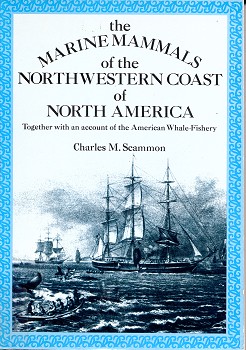 |
surfresearch.com.au
scammon : lagoon rescue, 1857 |
| home | catalogue | history | references | appendix |
|
Scammon's expedition
arrived at Lagoon or Safety Head (adjacent to what is now generally known
as Scammon's Lagoon) in late 1857, and during the collection of timber
from a beached wreck, the four longboats were lost to sea.
A failed attempt
to retrieve the boats saw the loss of the ship's carpenter, however three
of the boats returned on the incoming tide and were secured by the crew
allowing the whaling to continue.
By far the most
noted resort for supplies in the northern hemisphere was Honolulu, Sandwich
Islands; yet Hilo and Maui, of the same group, were frequently resorted
to.
Here, the genial
climate and fruitful soil, which yielded abundantly the needful "recruits,"
and the open, easy life of the natives, caused it to become a favorite
place for the whalers to congregate.
Page 261
It was too
early to commence whaling; and being short of wood to last through the
season, the time and opportunity were improved to obtain a supply from
the wreck of a ship which lay strewn about the contiguous ocean shore.
To reach the
wooding place, it was necessary to land inside the passage and go some
distance along the beach, as no boat could approach from the outer coast.
One day having
been spent in preparing the fuel, another was expected to be ample time
to put it on
board.
All the boats
engaged in transporting it were moored near the shore in the lagoon, and
left in charge of a boat-keeper, it being impracticable to haul them up
at high tide on account of the broad, flat beach exposed at low water.
All the wooding
party being out of sight when at the wreck, the boat-keeper concluded to
refresh himself by a bath, and conceived the idea of converting one of
the boats into a bath-tub, by pulling out the plug in the bottom.
The boat soon
became water-logged, and the fellow, carelessly enjoying his ablutions,
got too far to one side of the craft, which instantly capsized, turning
him into the lagoon.
The current running
swiftly, dragged the anchor, and the man, in his fright, swam to the shore,
abandoning his boat, to which three others were fast, and all four went
drifting out of the passage. The alarm was given to the party on shore,
and it was a disheartening sight to behold the four boats drifting through
the breakers, for everyone knew that without them our voyage would be fruitless.
There were several Kanakas among the crew, who immediately saw the necessity
of saving the boats; and selecting pieces of plank, to be used as "surf-boards,"
put off through the rollers to rescue them.
Our carpenter
was an expert swimmer; and as soon as he saw the boats drifting along the
shore into the breakers, he threw off his clothes, plunged into the surf,
and had nearly reached them, when the anchor, ...
Page 262
... which had
been dragging all the while, brought up, and the current swept both the
carpenter and Kanakas out of reach.
They then made
for the shore, which all of them regained in an exhausted condition, except
the carpenter, who was never seen again.
The officers
present, with a portion of the crew, were so much discouraged that they
gave up all hopes of regaining the boats, and openly avowed that our anticipated
successful voyage must be abandoned.
|
The Marine Mammals of the Northwestern Coast of America. Dover Publications, 180 Varick Street, New York, NY, 10014, 1968. Originally published by John H. Carmany and Company, San Francisco, and G.P. Putman's Sons, New York, 1874. |
 |

| home | catalogue | history | references | appendix |